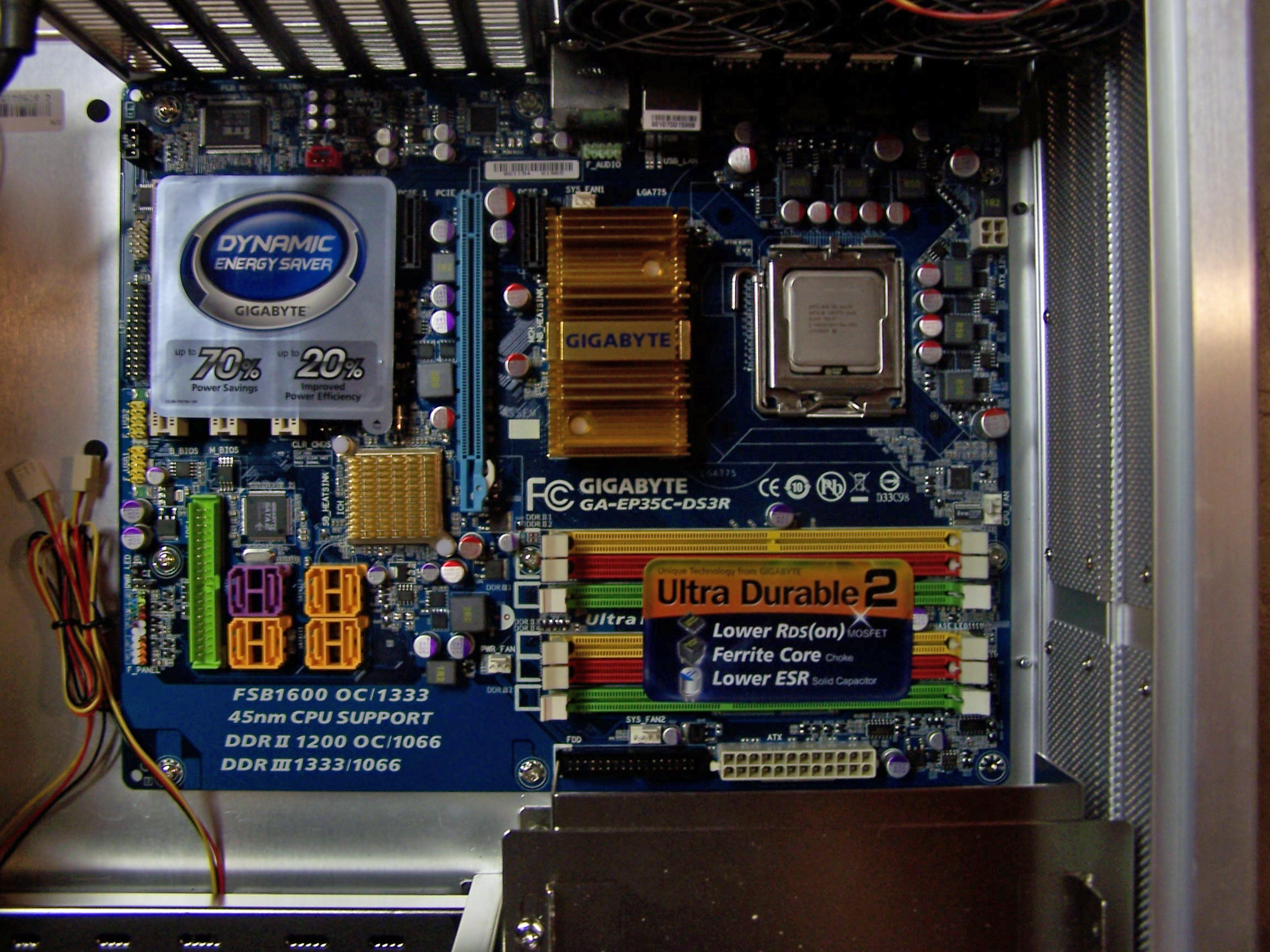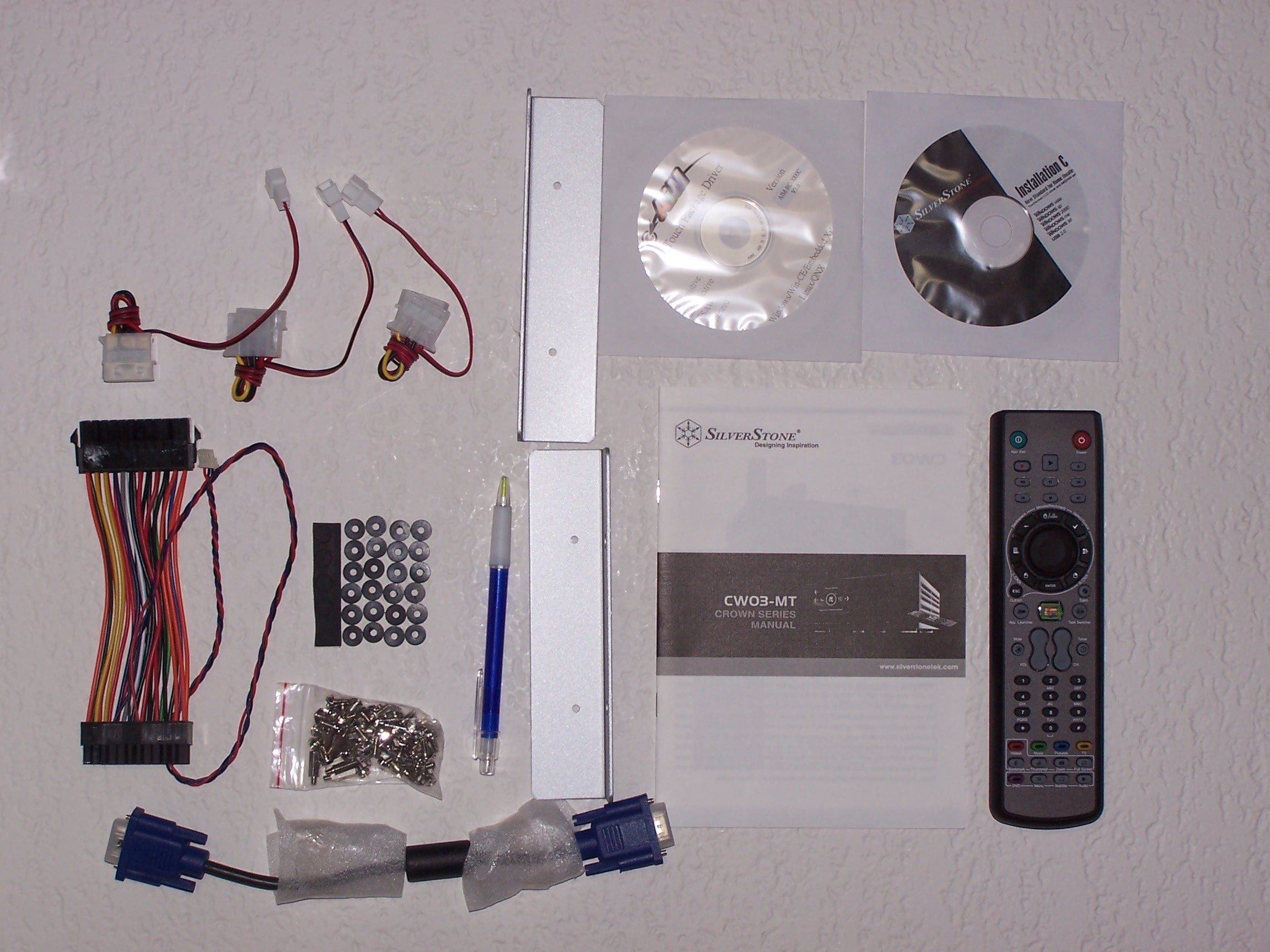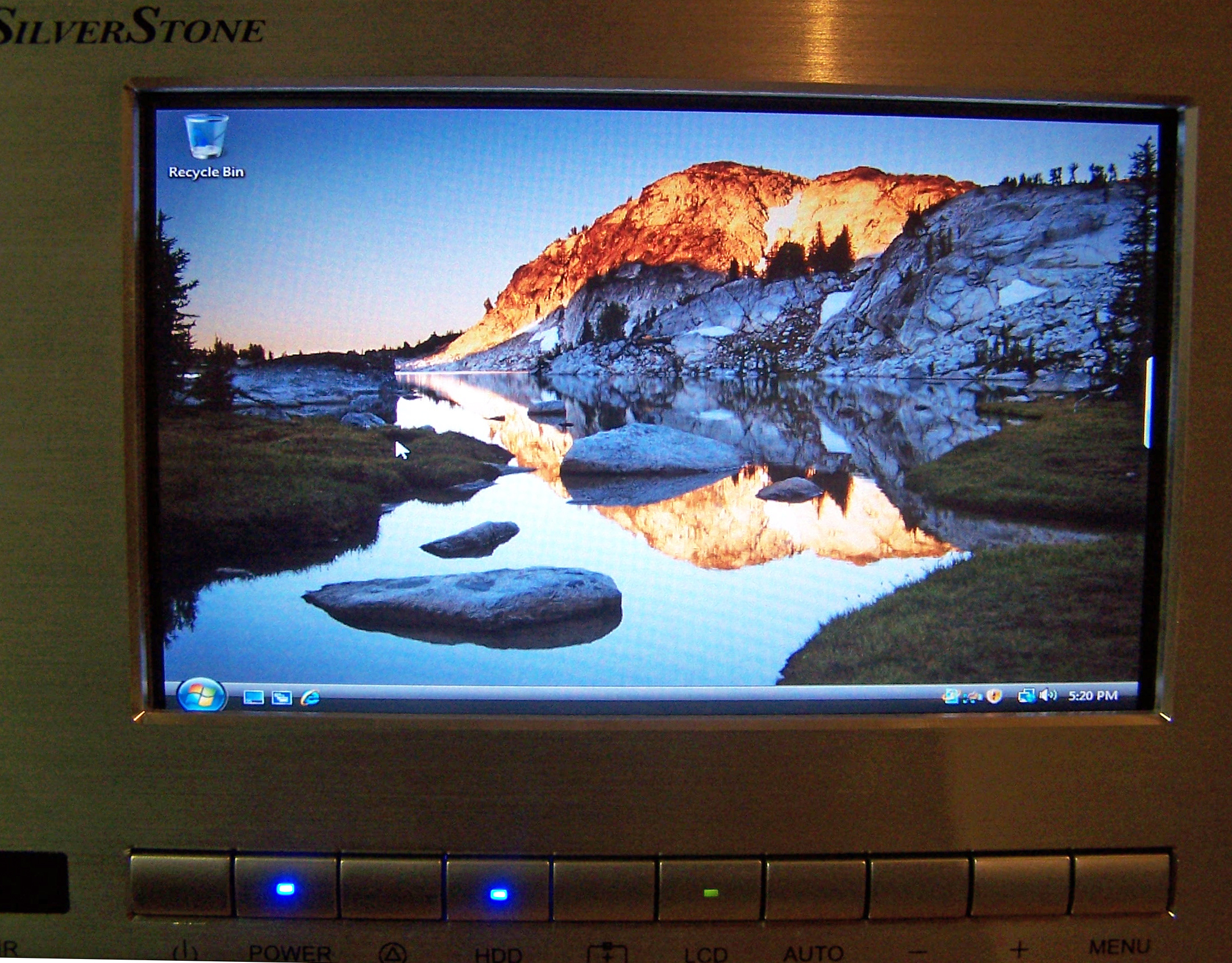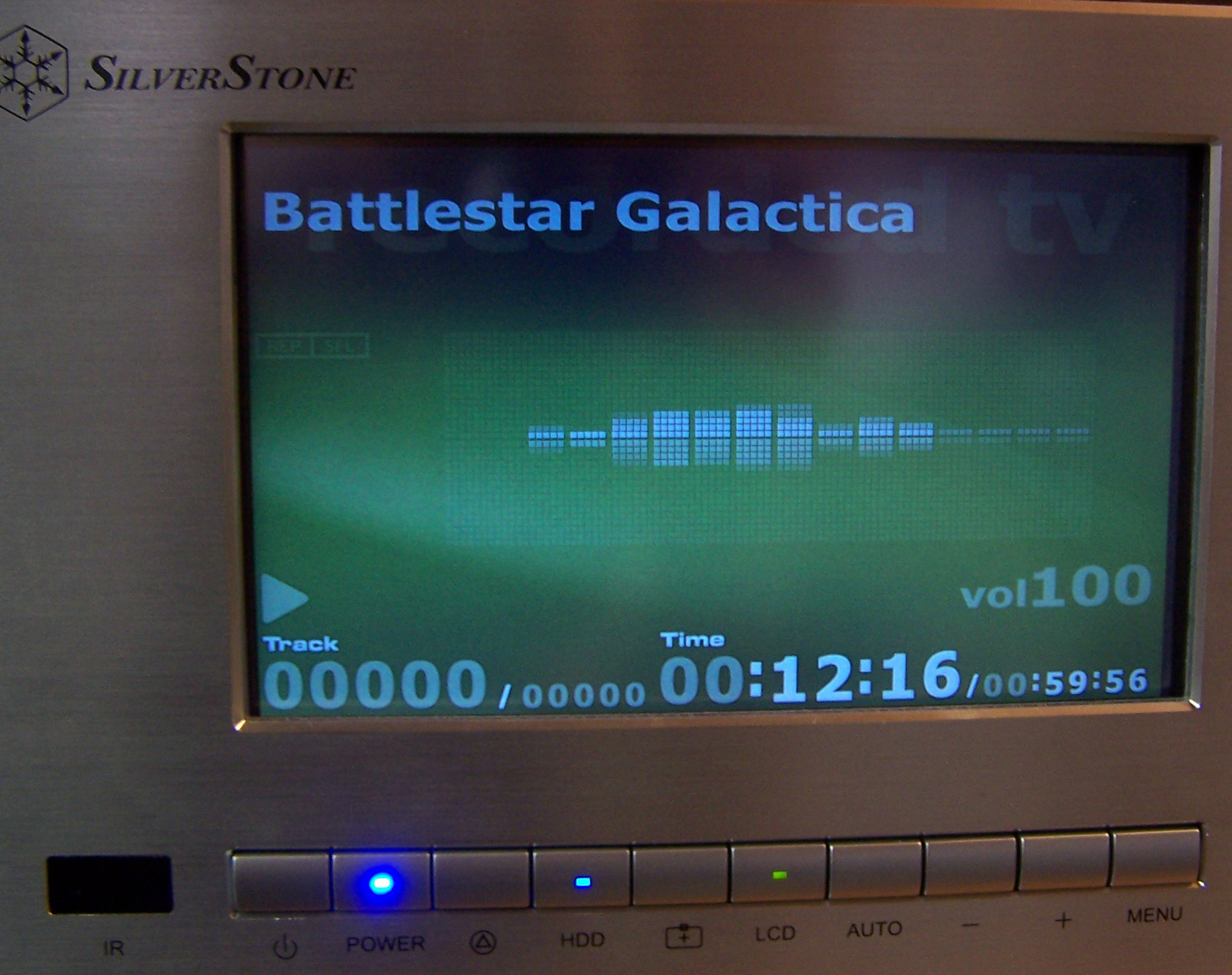Silverstone Crown CW03 HTPC Case
Making an HTPC
Making a HTPC
A case is only the start of a home theater system, of course — you must add system components to make it a full HTPC. Here are the details of the system components we used for this system build.
| Component | Manufacturer | Part |
|---|---|---|
| Motherboard | Gigabyte | GA-EP 35C -DS3R |
| CPU | Intel Quad Core | Q6600 |
| Video | MSI | NX8800GT 512M OC |
| Memory | Corsair DDR3 | TWIN3X2048-1333C9DHX |
| HDD | Seagate | WD5000AAKS |
| Blu-Ray DVD+/-RW | Pioneer | BDC-202BK |
| Tuner | Hauppauge | WinTV-HVR-1800 |
| Expansion Card | PPA USB2.0 + 1394 Combo | PCI Card Model 1509 |
Your build, of course, will depend on your individual system requirements.
The Intel Quad Core CPU is a 105 W unit ; you can select a lower-wattage unit to further lower power consumption and heat. The advantage of lower power consumption CPUs is that they also create less heat ; this in turn lowers the speed of the fans and system noise. These parts only fill the case, so to complete this build Windows Vista Ultimate was loaded. Again this is preference, but Vista Ultimate provides a one stop OS and PVR application package.
To complete the install, a few special connections are required. The LCD requires a VGA, power and USB connection to function correctly ; the video is completed off the back of the case using the secondary video connection of your video card. It uses VGA and not DVI, which means you have to use a DVI to VGA adaptor with this case. This allows the case to support video cards with dual DVI or one DVI and one VGA. The power connection uses a Molex to DC connection for the LCD. The USB connection takes up both sides of one of your motherboard USB headers.
The IR receiver also uses power, but this is pulled via a special 24-pin cable. that diverts a few power leads from the standard 24 pin connection to run the IR receiver. The IR receiver takes up another USB header on the motherboard, which will leave most motherboards without an available USB header for adding any dual port USB device. This would include many media readers, even Silverstone’s own product, that have USB ports. This is a shame because these would go very well with this case.
This motherboard only has only two headers, so you might prefer to route the cable out the back of the case and connect it to a rear USB port to save one header. You could do this with a USB cable with an A connector on both ends, or rework the supplied cables so that they use only a single header and leave one open. This would be an upgrade that Silverstone could add to the next generation of the case.
Get Tom's Hardware's best news and in-depth reviews, straight to your inbox.
Crown CW03 Specific Features
The case is meant to be the shell of a premier HTPC, which is why we installed Windows Vista Ultimate Edition. This went without incident using only the 7" display, and was the most fun I have had installing any version of Windows in a long time. Just watching how well the LCD performed and figuring out what works when was cool. Installing the additional software would have to wait, as the manual indicated that you should install the iMon OEM Touch LCD software after you configure the display as the secondary display, and specifying that you are extending Windows onto it. The manual also indicates that you need to run the display at 800x600 pixels, which is not the default resolution of the screen (it’s 800x480).
The software allows you to select the interface to use and allows you to feed data, such as email, news and more, to your LCD display.
While watching TV or playing music, you can see the graphic equalizer or show/song information.



